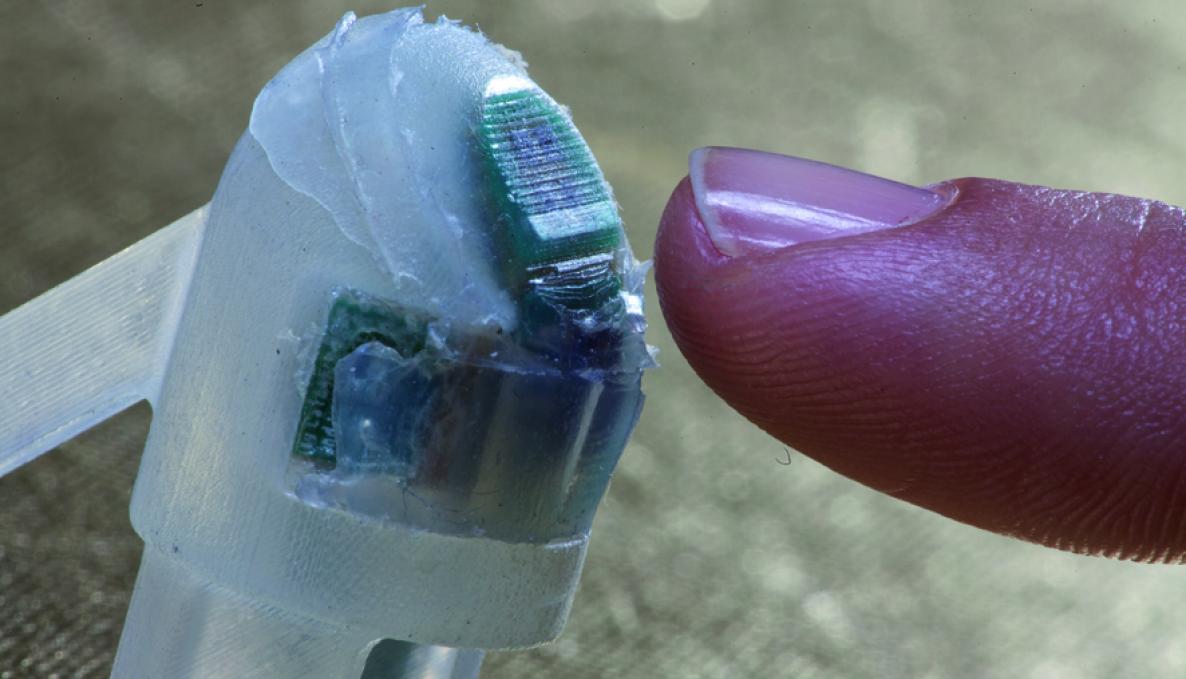neuroprostheses and tactile perception: improving the bionic prosthetic hand to MAKE It behave as a natural part of the body. sensors encode tactile interaction TO explore and DISCRIMINATE object texture

Developing advanced bionic hand to identify naturalistic daily life textures on wood, paper, and textiles surfaces. The multi-authored paper “Morphological Neural Computation Restores Discrimination of Naturalistic Textures in Trans-radial Amputees” published in the Scientific Reports journal, is a study undertaken by a team of academics from the Sant’Anna School Institute of Biorobotics; the Dipartimento di Ingegneria elettrica ed elettronica - University of Cagliari; the Brain Connectivity Laboratory of IRCCS San Raffaele Pisana – Rome; the Bertarelli Foundation Chair in Translational Neuroengineering (École Polytechnique Fédérale de Lausanne - EPFL); the Institute for Robotics and Intelligent Systems, ETH Zürich; the Università Cattolica del Sacro Cuore - Rome and the Laboratory for Biomedical Microtechnology - Freiburg University (Germany).
Researcher Alberto Mazzoni, as the scientific coordinator of the Computational Neuroengineering Lab, is he first author who cooperated with Professor Silvestro Micera and Professor Calogero Oddo to study textural classification and perceptual functions restoration.
Being able to restore perceptual functions is of primary importance to improve quality of life for people with limb amputations. Over the past few decades, researchers at the Biorobotics Institute have developed upper limb neural prostheses to pursue the restoration of motor and perceptual functions to individuals with neurological disorders or disabilities.
In their studies, Silvestro Micera and Calogero Oddo demonstrated that the feedback enabled the patients to modulate the grasping force of the prosthesis with no visual or auditory feedback. Micera and Oddo have started from the results achieved in their previous study about the ability to restore tactile discrimination of gratings coarseness in upper limb amputees through intra-neural tactile feedback.
Since then, Silvestro Micera and Calogero Oddo have continued to raise the bar and the present study confirmed the findings on naturalistic textures discrimination. Tests were performed at the Policlinico Gemelli hospital under the supervision of Professor Paolo Maria Rossini in cooperation with Professor Luigi Raffo (working on Scalable Software Hardware Architecture Platform for Embedded Systems) and Professor Massimo Barbaro (working on analog microelectronics and implantable neural interfaces.at the University of Cagliari).
Authors show that a spiking temporal code could underlie the strategies implemented every day to gather textural information from daily life objects. Transduction based on morphological neural computation (MNC) transformed the geometrical features of the surfaces into a sequence of spikes that are delivered to the median or ulnar nerves by means of intra-neural electrical stimulation.



